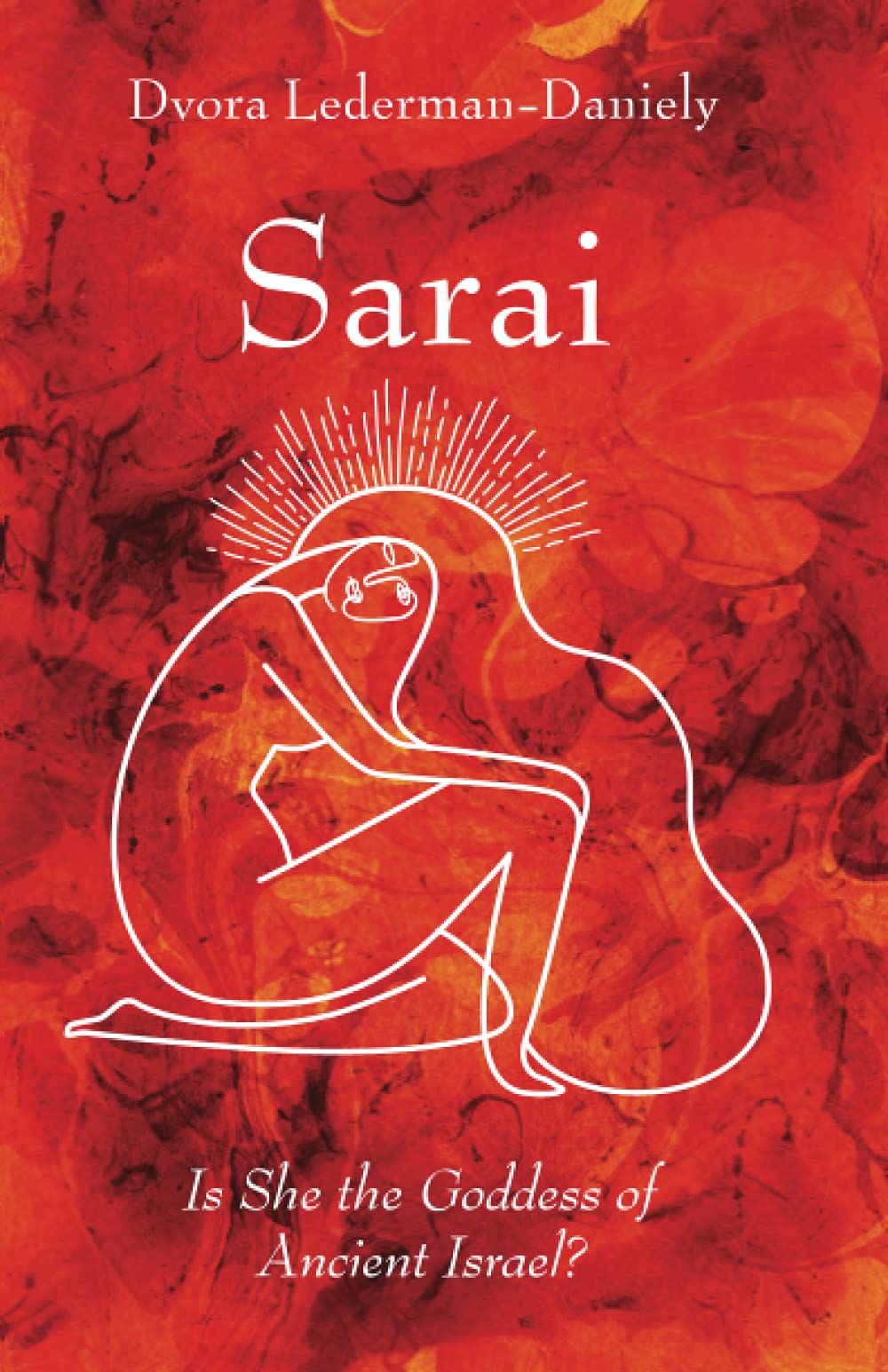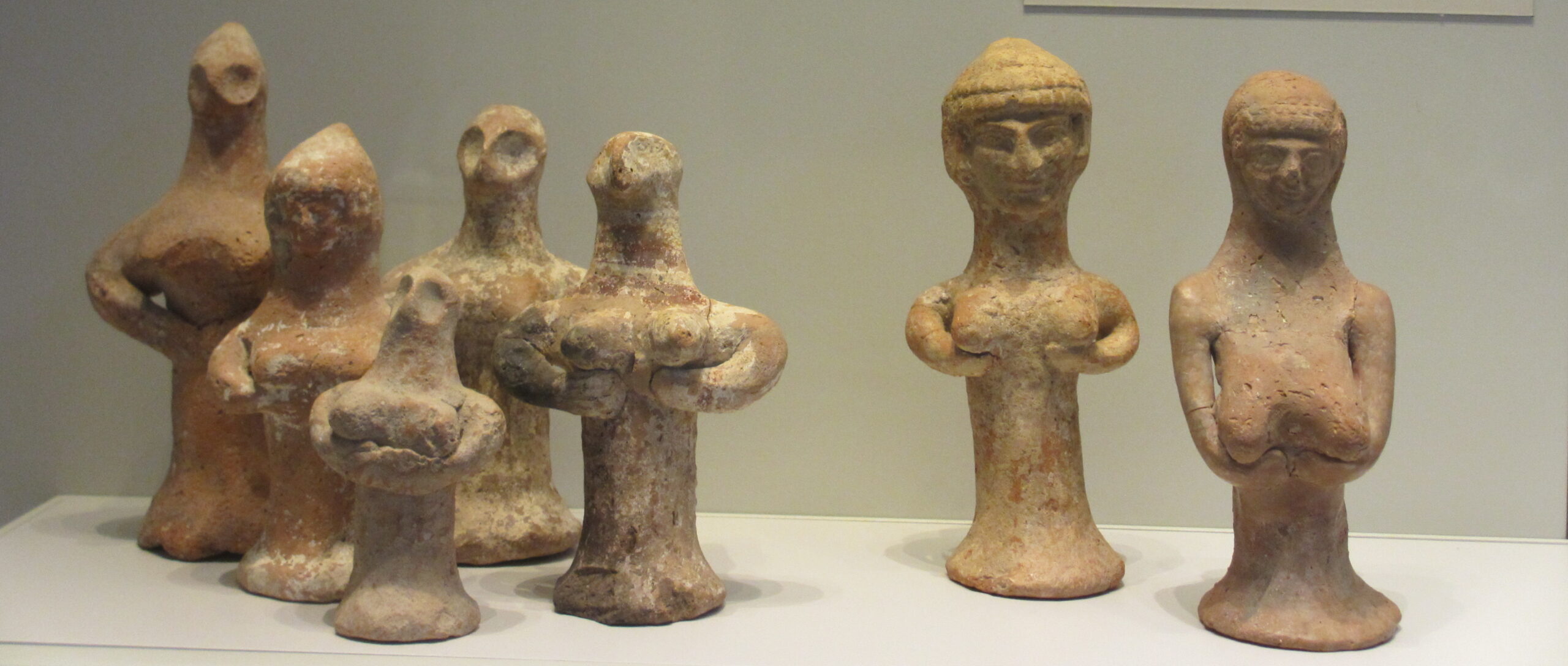
Who’s Afraid of the Goddess of Ancient Israel?
june 2022 | Vol. 10.6
By Dvora Lederman Daniely
Archaeological and literary-biblical studies have long shown that the worship of a Mother-Goddess was an early integral part of the religion of ancient Israel. Numerous goddess figurines, ritual objects, as well as rich iconography, demonstrate that goddess worship was extremely important in the life of Israelite faith.
While the biblical narrator dissociated Yahweh from any divine consort, instead associating the biblical Asherah with Ba’al, archaeological findings show that in some places Asherah was actually perceived as Yahweh’s consort. The Iron Age inscriptions from Kuntillet Ajrud in northeastern Sinai, and Khirbet el-Qom near Hebron, featured a believer who blesses and vows in the name of Yahweh and his Asherah. At Kuntillet Ajrud, alongside the inscriptions were drawings of a bull and a cow as a regal couple, and, at least according to some researchers, these embody the God and Goddess, the mythological couple, Yahweh and Asherah.
Many studies on Asherah in the Bible have concluded that Asherah was a popular and beloved Mother-Goddess in the religion of Israel. Asherah was regarded as a benevolent, divine kingship (also known as the “Queen of Heaven”) who bestows abundance and protection to the people. The human queens were in charge of Asherah’s worship and hosted her priests. The worship of Asherah, as the Book of Kings itself disapprovingly attests, was conducted within the Holy Temple itself alongside the worship of Yahweh (“And the carved image of Asherah that he had made he set in the house of which the Lord said to David and to Solomon his son, “In this house, and in Jerusalem, which I have chosen out of all the tribes of Israel, I will put my name forever.” 2 Kings 21).
Although biblical authors cast worship of this divine spouse as idolatry leading up to sin, this characterization was contrary to the prevalent cultic religion in the early days of Israel. This portrayal was intended to preserve the appearance of monotheism. It suited the spirit of religious reform that prevailed in the days of the seventh century king Josiah that abolished all divinities other than Yahweh. This monotheistic outlook took central place in the edited version of the Bible. Essentially, biblical editors presented a new, more stringent cult, in which monotheism was present from the beginning of time, when in fact it was not.
Pillar figurine from Lachish. Metropolitan Museum of Art 34.126.53. Public Domain.
This literary and religious attempt to obliterate the Goddess, was not entirely successful: within the Bible the shadow of Asherah as a divine consort remains, although veiled in various literary guises. The image of Asherah was camouflaged and preserved in other forms and metaphorically. Some scholars claim that the metaphorical entity, Wisdom, in the Book of Proverbs is actually the literary transformation of the Goddess Asherah. Others regard the figure of the Woman of Valor (Eshet Chayil), as she is portrayed in Proverbs 8, as representing the deleted ancient image of Asherah.
Another assumption is that the source of the conjugal metaphor between God and his bride or spouse alternately named Jerusalem, Zion or Bat Zion is the mythological conjugal relations between Yahweh and his spouse consort, Asherah. In my book Sarai: Is she the Goddess of ancient Israel? I suggest that the entity the prophet Isaiah calls to awaken, the arm of God also called “meḥôlelet” is the metamorphosis of the divine consort. This character is depicted as the one from whom the creatures of the sea were created, in the days of creation in ancient times. In Isaiah 51: 17, the same entity that the prophet aspires to awaken is also called Jerusalem. In Isaiah 52, the prophet again calls upon this entity to awaken, and this time it is called Zion. We should recall that a religious tendency in the ancient Near East was to call the Goddess by the name of the city under her patronage. It is therefore possible that the appellations of Jerusalem and Zion were attributed to the divine consort, Asherah. who was the patron of Jerusalem.
Judean pillar figurines from Jerusalem, Beersheva, and Tell Areini. Photo by Chamberi via Wikimedia Commons. CC BY-SA 3.0.
The realization that the metaphorical relationship described in the Bible between Yahweh and his spouse may have originally constituted an actual mythological relationship between God and a Goddess, requires a rethinking of the theological implications that arise.
If the city is a coded representation of the Goddess, then according to some biblical descriptions, God’s wife was severely beaten by Yahweh. The Book of Lamentations clearly exposes this violent relationship: “She that was great among the nations has become like a widow; the princess among states has become powerless.” (Lam 1:1). “Her enemies are now the masters… because the Lord has afflicted her for her many transgressions; her infants have gone into captivity before the enemy” (Lam 1: 5). The woman who is beaten and bruised, describes her abusive husband: “May it never befall you, all who pass along the road. Look about and see: is there any agony like mine, which was dealt out to me, when the Lord afflicted me on His day of wrath” (Lam 1:12). “From above He sent a fire down into my bones. He spread a net for my feet, He hurled me backwards; He has left me forlorn…” (Lam 1:13).
But it is not only Yahweh’s wife who is punished. His jealousy causes Him to also behave cruelly to her children. The ancient Israelite mythical tradition describes Yahweh as an angry husband, jealous of the wife, who punishes her by harming and abusing her children. He maintains a violent relationship with the people of Israel, based on wreaking vengeance on their Mother-Goddess. He demands their absolute loyalty and the total abandonment of the Mother who betrayed Him. The childrens’ yearning for their Mother while repeatedly returning to her is defined as a sin by God the father, and results in harsh and brutal punishment.

Sarai, Is She the Goddess of Ancient Israel? Book by the Author.
In the face of the violence against her children, the mother is forced to plead with her violent and murderous husband: “The Lord is righteous, because He has spoken, so hear all the nations.” Thus she tries to save them from His harshness. These moments of servility sometimes turn into moments of reconciliation, as the angry husband calms down and offers mercy and consolation.
In fact, what the authors and editors of the Bible describe in later stages of the development of Israel’s religion as God’s jealousy for the pure and holy faith of His people, can also be perceived, in the early beginnings of Israel’s faith, as the jealousy of a husband for his wife. The destruction, death, punishment, suffering, and exile of this woman’s children (the people of Israel) were his revenge on the woman-Goddess.
Such an analysis of the infrastructural mythological narrative that underlies the ancient religion of Israel, may remove the veil of denial and deletion from the ancient divine mother of the people of Israel, and in the Jewish religion that has evolved over the generations. That which has been labeled as foreign idolatry that leads to sin, that which has undergone a process of deliberate alienation and estrangement, may return as a vital, healing and essential sacred female element, for the women and men followers of the Jewish religion.
Dvora Lederman Daniely is a lecturer and researcher at the David Yellin College of Education.
How to cite this article
Lederman Daniely, D. 2022. “Who’s Afraid of the Goddess of Ancient Israel?” The Ancient Near East Today 10.6. Accessed at: https://anetoday.org/lederman-daniely-goddess/.
Want to learn more?


The Amorites: Rethinking Approaches to Corporate Identity in Antiquity

Cyprus and Ugarit: A Tale of Two Late Bronze Age Mercantile Polities




Post a comment